分享到微信,
请点击右上角。
再选择[发送朋友]
或[分享到朋友圈]
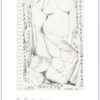
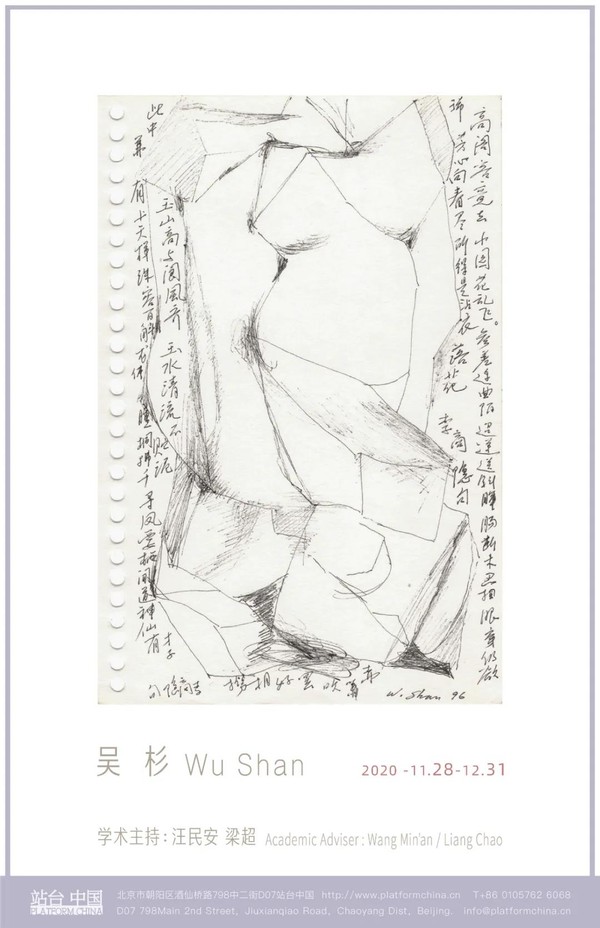
吴杉 2020 —— 第三单元
Wu Shan 2020 —— PART III
学术主持 Academic Director |
汪民安 Wang Min’an / 梁超 Liang Chao
展 期 Duration | 2020.11.28 - 12.31
地 点 Venue | 站台中国当代艺术机构-主空间
(北京朝阳区酒仙桥路2号798艺术区中二街D07)
《吴杉2020》已于10月17日在站台中国正式开幕。为呈现吴杉艺术实践的脉络,站台中国分期调用了主空间与dRoom 来分别呈现展览的3个部分,前两单元已于10月22日闭幕。
11月28日,站台主空间将推出展览的第三个重要部分,呈现其跨度近三十年的素描手稿。这些手稿对他而言,犹如日课一般,既是吴杉对绘画最直接的思考,也是其私人情感的坦露。他在80年代初去了美国,在那漫长的二十余年里,既有枯燥,沉闷,也有刺激,好奇,悲伤,抑郁,欢快,迷茫,被抛弃,兴奋,迷幻。但生活的无常并没有消磨其坚强的个人意志,他以对艺术极度的信仰和依赖,积累下丰富的手稿——这是艺术家的心灵日记。展览希望通过这些日记去呈现那样一个人,而观众可以从中窥见那样一个时代。
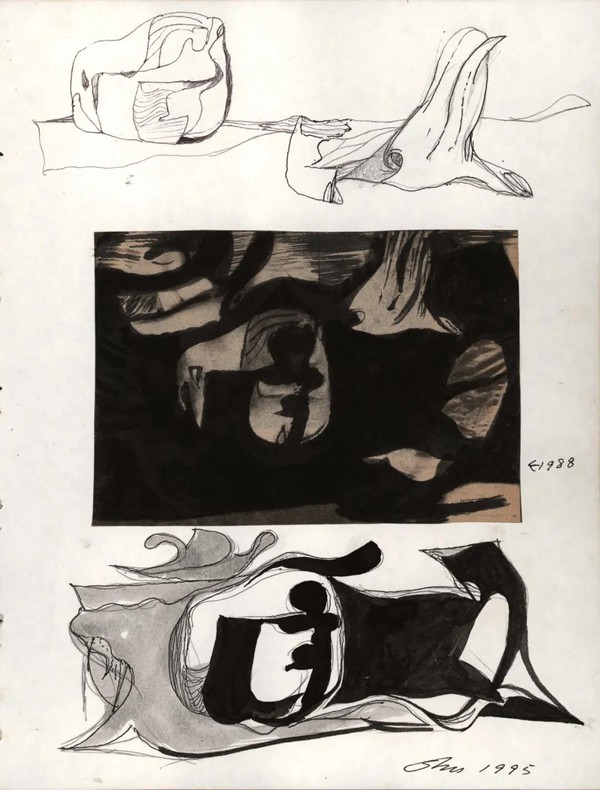
▲
纸本手稿 No.187/Manuscript on paper No.187
水墨、铅笔、签字笔、拼贴/Ink, pencil, pen, collage
1988-1995 / 21x27cm
线的轻逸、速度和动荡
——关于吴杉的绘画
文 / 汪民安
没有人的线条比吴杉画的线条更纤细了。也可以说,没有人的线条比吴杉的线条更轻逸了。这些线条拼命地缩小自己,减轻自己的重量,它在自我隐逸。它让自己变得如此轻逸,但绝不是让自己变得微不足道,也不是自我蔑视和自我否定。吴杉如此努力,如此执着地画出这些细线,几十年一直在画这种线。这些轻逸线既是吴杉的艺术方式,也可能是他的生活方式。或许,吴杉力图过一种轻的生活,一种简化的生活,一种力图削除枝蔓,去除繁冗,躲避滞重的生活,就像那些轻逸的线条在消减各种各样的繁琐障碍一样。在此,生活是以轻的方式获得自己的存在,获得自己的重量;生活之重也就是生活之轻。一种好的生活,就是一种轻的生活。在吴杉这里,同样,一种好的艺术,就是一种轻的艺术。卡尔维诺也有类似的表达,他说,世界越来越沉重了,艺术也越来越沉重了,他要追求相反的艺术,对日渐石化的世界,应该有一种轻的艺术来对抗。他试图减少文学的沉重感:语言的沉重,结构的沉重。
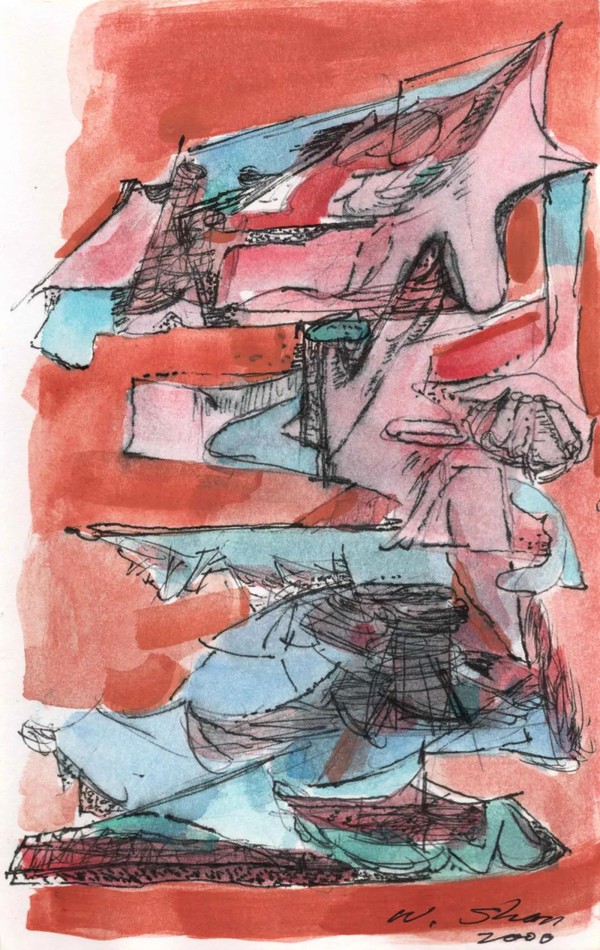
▲
纸本手稿 No.130/Manuscript No.130
纸上水彩、签字笔/Watercolor, pen on paper
2000 / 15.1x9.8cm
吴杉这种轻的艺术,轻的线条又意味着什么呢?我们看到,这些线条是封闭的,没有开端,没有结尾,它们总是在复杂的迷宫一般的循环中自我连接,自我往返,自我回旋,自我游戏。它有一种内在的自主性,它沉浸在自己的世界中,拒绝任何外在超验性的闯入,因此,它消除了外在的指涉。它不仅在线条的连接中是自闭的,它对外界没有兴趣。这样的线是不表意的线。或者说,它减除了各种各样的意义,减除了各种各样的重负,它就是线本身。同时,这线本身,它如此轻盈,如此地细微,它也从自身身上剥去了最后的厚度,也剥去了微弱的强度,剥去了自己的重量。而且,线的痕迹非常稳定,非常均匀,没有起伏,它们的变化是色彩,一段一段的颜色在变化,但是,因为线条纤细,这些变化不会导致陡峭和峻急,但是,线条的痕迹,它的粗细,它的密度,它的速度基本上是均匀的。因为线条均匀就不会激变和动荡。因此,在这里看不到线的内在能量:线不包蕴激情。因此,尽管是自主的封闭之线,也看不到它的内暴,它没有对边界的猛烈冲破,也不是对边界的审慎保守;它既不解域也不结域;它甚至不是界限,也不是要对界限的僭越。它也不是人们习惯性与之对抗的切割、束缚和困境之线。它没有开口,没有突如其来的拐弯,没有一种猛烈的旁逸斜出。它也不相反地表现出笨重,吃力,结巴,寸步难行。它既不是冲动的,也不是束缚的。相反,它安静,不为所动,自我沉浸,自我内卷。它如此地平静,你甚至可以说它是不运动的线。它就是纯粹的线本身,是线的痕迹本身。
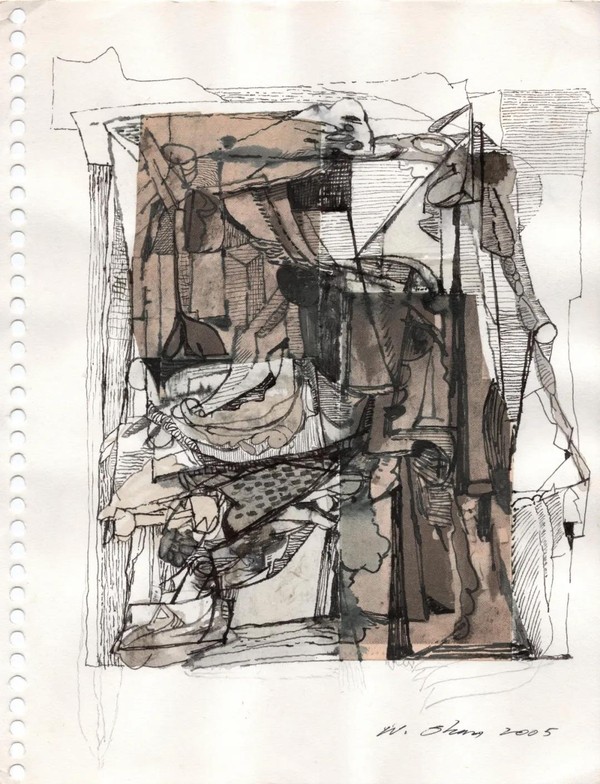
▲
纸本手稿 No.105/Manuscript on paper No.105
水彩、签字笔、拼贴/Watercolor, pen, collage
2005 / 27.9x21.4cm

▲
纸本手稿 No.334/Manuscript on paper No.334
纸本签字笔/Pen on paper
2011 / 21.5x28cm
这些内在性的线,这些平面的线,这些寂静的线,尽管同那些暴躁的急切的随心所欲的力量线完全不同,但它也不是理性的勾画方案。你会觉得这些线画得很慢,画得很细致(它既不让自己冲动,也不让自己变得粗鲁,更不让自己显得笨拙),它如此之慢,以至于速度本身湮没了,你甚至感受不到速度,就像感受不到它的激情一样。但是,慢速和细致,并不意味着在仔细推敲,在精心选择,在精巧地构思。我们很难看到这些线是从何处开始的,又是从何处结束的。线没有矢量,没有一个确切的方向感,我们甚至很难判断线是朝着哪个方向勾勒出来的,似乎两个截然相反的方向都有可能。我们无法沿着它的路径来旅行,或者说,我们无法在这些线上行走,没有一条有效的可预期的路径跟踪它,追逐它,它到处是踪迹,但是没有轨迹。它甚至没有目的地,不知最终应该停留在何处。它们也不构成图案。它们一旦快形成一个可辨认的图案的时候,就偏离了那个图案,图案绝不是这些线的目标和栖身之处。它们绝不围绕着某个形象来制作图案。
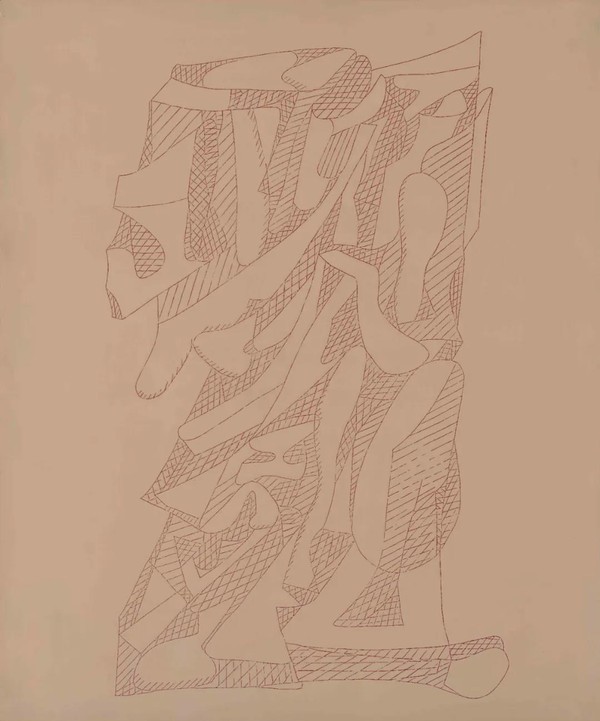
▲
傍妆台/Bangzhuangtai
大漆、麻、木板/Lacquer hemp board
2014 / 60x50cm
就此,我们很难看到这些线的野心、谋划和目的。这是无目标的耐心和细致。它似乎仅仅是为了细致而存在的,似乎细致和耐心本身就是它的目标。或者说,这些线的谋划就是体现在这个细致和耐心的过程中。不仅线的慢速体现了这种耐心,而且这些线的形成过程本身也体现了耐心。这些线(包含线的画面背景)都是由大漆制作完成,或者说,大漆的干燥过程就是线的形成过程,这是缓慢的时间过程。线被反复地涂绘(但是充满节制地涂绘,反复地涂绘也不让它变得粗壮),直到它显著地凸出在画板上。大漆也在一遍遍地干燥。无论这些线如何纤细,如何简略,如何看起来轻逸,它还是漫长的时间耗费。大漆的干燥过程,即线的形成过程,也是一个耐心等待的过程,一个时间中止,停顿和断裂的过程。一张画,要在漫长的停顿之后又重复开始。
所有这些线的无意义,无目的,无激情,无强度,无轨迹,无图案,都指向一种彻底的轻盈,彻底的弱势,彻底的沉默。这些线好像已经沉默到无法再沉默的地步。这些线画出来似乎是为了隐藏自身,画出来似乎就是为了让自己消失,画出来似乎就是想抹掉自身。它显示自身,证实自身的方式就是要抹掉自身。也可以说,这些线显示自身的同时也是在隐藏自身。它在隐藏自己的同时也在显示自身。人们很少见过这样的羞涩之线。
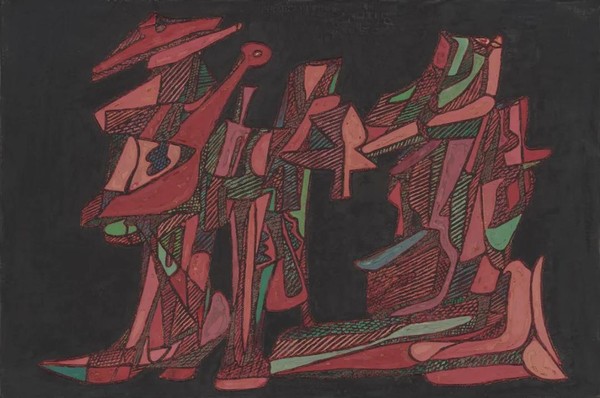
▲
喜迁莺/Xiqianying
大漆、麻、木板/Lacquer hemp board
2012 / 80x120cm
这些线为什么能够既显示自己又隐没自己呢?它出现在一个基底和背景之上,这是线和背景的游戏。这些稳定的线托付于一个同样由大漆绘制的单色背景,它将自己沉浸在这个背景中,但又从这个背景中悄悄浮现,仿佛是怕惊扰了这个背景,也仿佛是怕毁坏了这个背景。它就是和这个背景在进行一种显-隐游戏:这个背景仿佛生出了它,是它的铺垫,是它的根基,它托付着这些线使之绽出。这是线的显白和诞生,一种有母体的诞生。但是,反过来,这些背景似乎也阻止它的绽出,似乎也像是对它的覆盖,似乎要将它吸纳,要将它吞没,要将它抑制住要将它遏制在萌芽状态使之不能壮大。这就是婴儿般的初生和脆弱之线。这里就出现了一个冲突的关系,但是是一种亲密的冲突关系:线寄生于这个色块背景,但也和它保持一种冲突;它依赖于背景色块,也要挣脱出这个背景色块。它和这个背景在玩一种矛盾游戏:正是这个挣脱使之努力地显现,正是这个寄生使之不可能显赫地显现。线和它的画面背景就这样展现出一种既是冲突同时又是归属的亲密关系,一种充满张力的关系。线的呈现程度,取决于这种张力,有时候线几乎被色块湮灭了,有时候线又从色块脱颖而出。

▲
纸本手稿 No.245/Manuscript on paper No.245
纸上签字笔/Pen on paper
2005 / 21x30.7cm
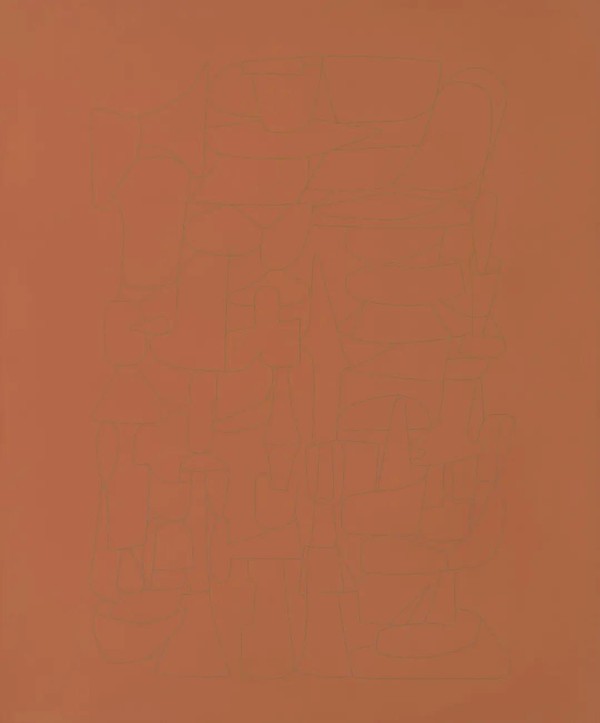
▲
桂枝香B/Guizhixiang B
大漆、麻、木板/Lacquer hemp board
2020 / 60x50cm
那么,这个作为背景的色块呢?我们在画面上总是看到了线,哪怕它不起眼,但是,正是这种不起眼,激起了人们的全部注意。我们甚至忘却了大幅的背景色块。好像这些背景色块是自然存在的一样,好像它们事先已经存在在那里,艺术家的工作不过是在这个色块上画上细线。细线吸引了更多的目光。但是,我们一旦将目光转向这些色块背景呢?我们可以反过来说,这个色块同样是由线来决定的。这是大漆构成的单纯色块,它们既纯洁又完整,它们沉浸在色彩的自满中。但是,浮现在这个背景中的线——无论它是如何低沉和细微——总是对完整性的毁坏,总是让作为整体性的背景出现了裂缝和瑕疵。它似乎闯入了画面划破了画面。它是对完整性的反讽。但是,反过来,我们同样可以将这种毁坏看做是精心的装饰、点缀,看做是对单色抽象绘画的善意挪用。如果激进一点的话,我们可以将它们看做是对这个总体性的一种破坏式的新生:正是这些低调细线导致了一种不完全的总体性,不完全的单色绘画。正是线的闯入,线和色块的显-隐冲突,使得这个色块获得了全新的命运。它们从一个极简主义或者抽象绘画的范畴框架中被拖出来,它们不再被凝神细看,它们也不再包含着神秘的咒语让人猜谜。它们只是在和线的抗争中展示自身。就此,绘画,无论它的线条多么细致,无论它的色调多么单纯,无论它的声音多么沉默,无论它的形象多么稀薄,我们还是能感受到它内在而隐秘的激荡和争执。
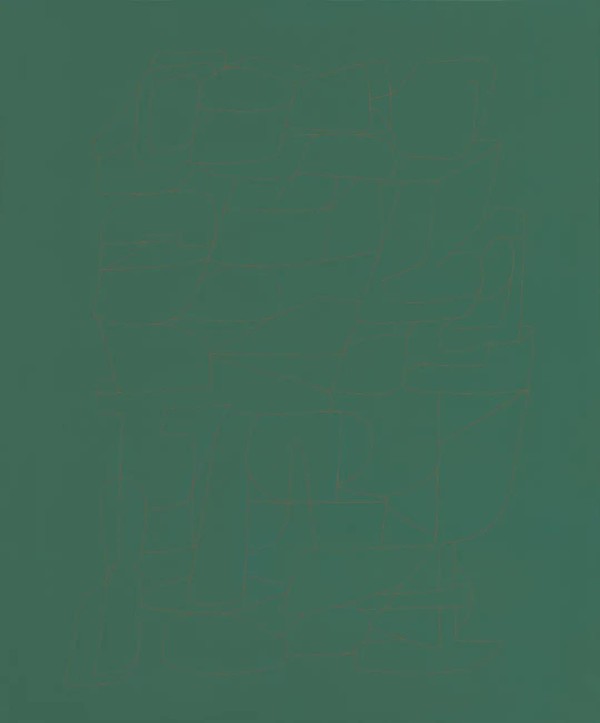
▲
玉天仙/Yutianxian
大漆、麻、木板/Lacquer hemp board
2019 / 60x50cm
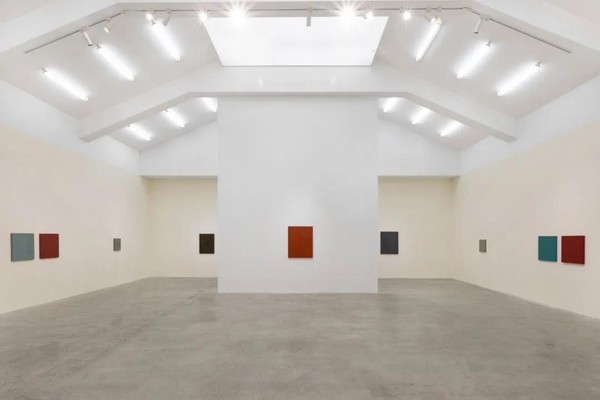
▲
吴杉 2020——第一单元展览现场
English Version
Lightness, Speed and Turbulence of Lines
——On Wu Shan's paintings
By Wang Min’an
No one's lines are thinner than those drawn by Wu Shan. In another word, no one's lines are lighter than Wu Shan's. These lines are trying to shrink and lose weight, as they are hiding themselves. Though appearing so light, they do not belittle, contempt or deny themselves. Wu Shan worked so hard and persistently to draw these fine lines, which he had been drawing for decades. These light lines not only embody Wu Shan's art style, but also embody his life style. Perhaps, Wu tried to live a light and simplified life, a life trying to cut off its branches, remove its cumbersome and avoid heavy burden, as if those light lines are getting rid of various cumbersome obstacles. Here, life embodies its own existence and weight in a light way; the heaviness of life is just the lightness of life to some extent. A good life is a light life. Similarly, for Wu Shan, a good art is a kind of light art. Calvino expressed the similar opinion. He said that the world is getting heavier and heavier, and so is art. He wanted to pursue a totally opposite art. Faced with the increasingly petrified world, there should be akind of light art to fight against this trend. He tried to reduce the heaviness of literature in terms of both language and structure.

▲
纸本手稿 No.379/Manuscript on paper No.379
纸上签字笔/Pen on paper
2013 / 26.5x35.5cm
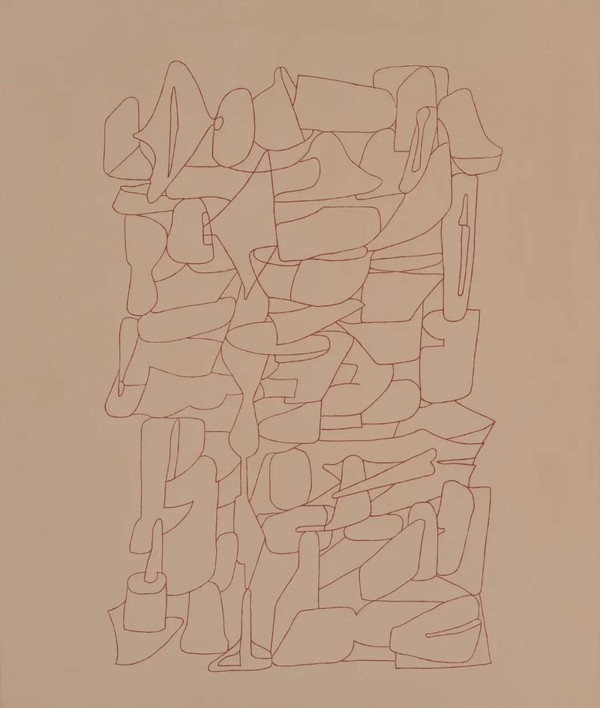
▲
山歌/Shange
大漆、麻、木板/Lacquer hemp board
2018 / 33x28cm
In such light art of Wu Shan, what do light lines imply? We see that these lines are closed with neither beginning nor end, and they are always self-connected, reciprocating, revolving and playing themselves in the complex labyrinth-like cycle. With somewhat internal autonomy, they are immersed in their own world and refuse any external transcendental intrusion. In this way, the lines eliminate the external reference. Not only are they self-contained in terms of line connection, they show no interest in the outside world as well. Such lines are those without meaning. In other words, they are alienated from all kinds of meanings and burdens, and are nothing more than the lines themselves. At the same time, the lines themselves are so light, so subtle, and are stripped of their final thickness, their weak strength, or their own weight. Moreover, they are of very stable and uniform trace without ups and downs. The only change in them is that in color from section to section. However, because they are thin lines, these changes will not lead to steepness and precipitousness. They are basically uniform in terms of the trace, thickness, density and speed. And the uniform lines will cause neither upheaval nor turbulence. Therefore, you can see no inner energy of the lines here: the lines do not have passion inside. Therefore, autonomous closed line as they are, we cannot see their internal violence. They neither impact the boundary violently, nor act prudently and conservatively to the boundary. The lines do not weaken or enhance the boundary. They do not form the boundary or intend to trespass on it. These lines are also not cutting, binding or entrapping lines that people habitually confront. They have no openings, no sudden turns, no violent side escapes. Neither are they cumbersome, laborious, stuttering or unable to move. They are neither impulsive nor restraining. On the contrary, these lines are quiet, unmoved, immersed and involved in their own business. They are so quiet that you can even call them non-moving lines. They are purely lines, or the trace of the lines.
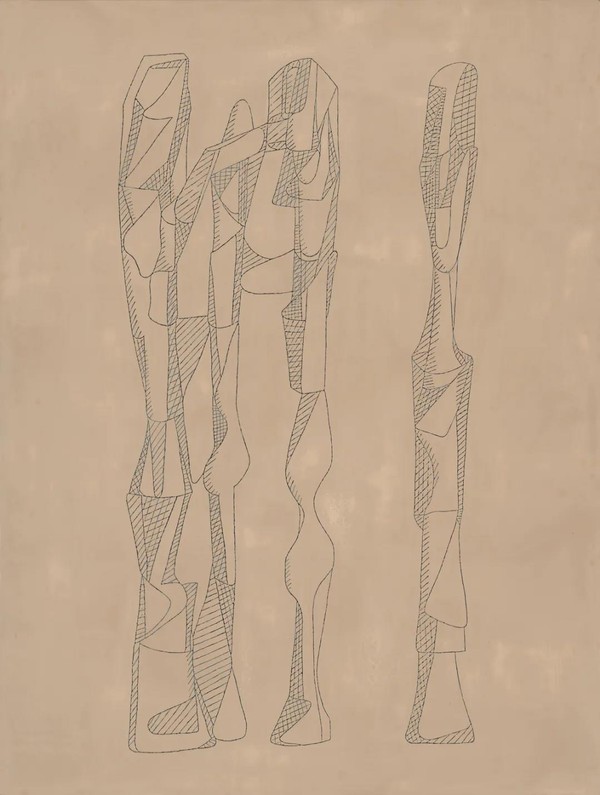
▲
朝元歌/chaoyuange
大漆、麻、木板/Lacquer hemp board
2014 / 80x60cm
These plane lines are completely different from those violent, urgent and free-willed lines of strength, and are not rational sketching schemes, but are always silently facing their own world. You will feel that the lines are drawn slowly and carefully (they show no impulsion, rudeness or clumsiness), so slow that the speed itself is lost, and you can't even feel the speed, just as you can't feel its passion. However, slow speed and meticulousness do not mean careful consideration, careful selection, or elaborate conception. It's hard to see where the lines start and where they end. The lines are no vector with significant sense of direction. It is even difficult to determine in which direction the lines are outlined, both directions are possible, opposite as they are. We can't travel along their paths, or we can't walk on these lines, we don't have an effective and predictable path to track or chase them, they’re everywhere, with no track left behind. They don't even have a destination, and nobody knows where they should end up. They don't form patterns either. Once they are about to form a recognizable pattern, they deviate from that pattern because the pattern is by no means the target and shelter of these lines. They never make patterns around a certain image.
In this regard, it is difficult for us to see the ambition, planning and purpose of these lines. They show aimless patience and meticulousness and seem to exist only for the sake of meticulousness, and it looks like meticulousness and patience are their aims. In other words, the planning of these lines is reflected in this meticulous and patient process. This kind of patience is shown not only in the slow speed of the lines, but also in the formation of these lines. They (including the background of the lines) are made by lacquer, or the drying process of lacquer is the formation process of lines, which is a slow process. The lines are painted over and over again (repeatedly but in moderation, without making it bulky) until they are protruding significantly on the board. The lacquer is also drying over and over. No matter how thin and simple they are, no matter how light they look like, it is a long and time-consuming process. The drying process of lacquer, or the formation process of lines, is also a process of patient waiting, a process of time interruption, pause and fracture. A picture starts again after a long pause.
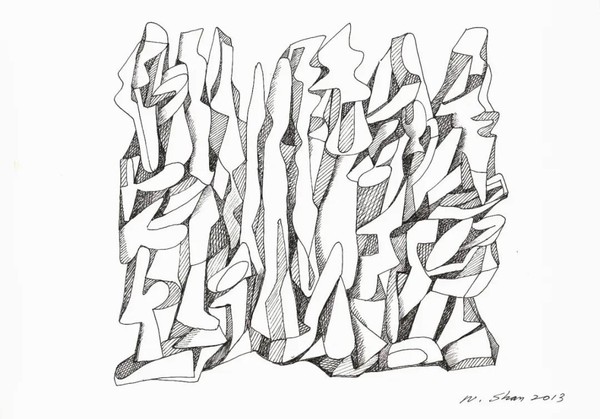
▲
纸本手稿 No.382/Manuscript on paper No.382
纸上签字笔/Pen on paper
2013 / 26.5x35.5cm
The meaninglessness and aimlessness lines with no passion, no strength, no trajectory and no pattern point to a thorough lightness, thorough weakness, and thorough silence. These lines seem to have been silent to the greatest extent so that they can no longer be silent. These lines seem to be drawn to hide, to disappear, and to erase themselves. The way they show and confirms themselves is to erase themselves. It can also be said that these lines are trying to hide while showing themselves, and vise versa. People rarely see such lines of shyness.
Why can these lines show and hide themselves? They appear on top of a base and background and stage on a game of lines and background. These stable lines rely themselves on a monochromatic background painted by lacquer. Immersed in this background, the lines emerge from this background quietly, as if being afraid of disturbing or destroy the background. They are playing a kind of appearing and disappearing game with this background: the background seems to give birth to them and therefore, is their bedding and foundation to support their blossom. This is the whitening and birth of the thread, a birth with a matrix. However, on the contrary, the background seems to prevent them from blooming, and seem to cover, absorb, swallow, restrain them, and keep them in the bud so that they cannot grow. They are the lines of infancy and fragility. There is a conflicting relationship here, which, however, is an intimate conflicting relationship: the lines parasitize the background of color block, but also maintain a conflict with it; they depend on the background of color block, and are trying to break free from the background. They are playing a game of contradiction with this background: it is this breaking free that makes them manifest hard, and it is this parasitism that makes them impossible to manifest prominently. In this way, the lines and the background show a close relationship that is both conflicting and belonging, a relationship full of tension.
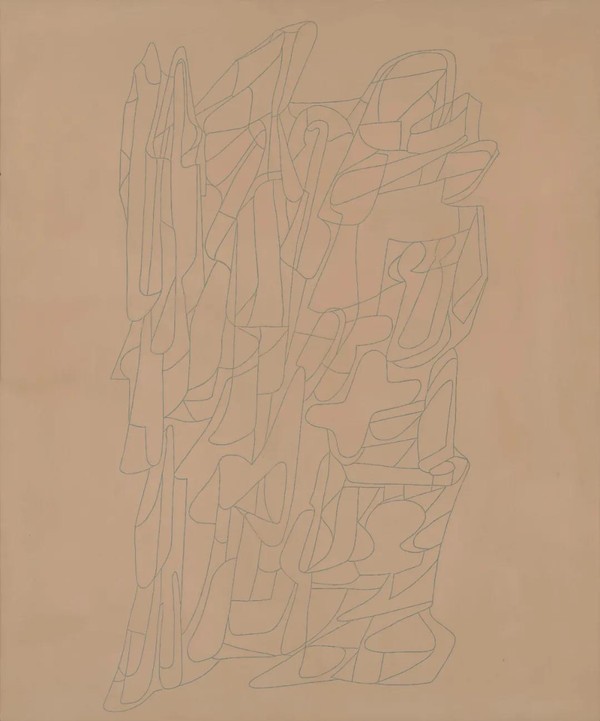
▲
出城曲/Chuchengqu
大漆、麻、木板/Lacquer hemp board
2016 / 60x50cm
The degree of line presentation depends on this tension. Sometimes the lines are almost annihilated in the color block, and sometimes the lines stand out from the color block. So, what about the color block as the background? We always see the lines in the picture, not eye-catching as they are, it is this kind of inconspicuousness that arouses all people's attention. We even forget the large color block in the background, as if the color block is natural, as if it has already been there, and the artist's job is just to draw fine lines on the color block. The thin lines draw more attention. But what if we shift our attention to the background of the color block? It can also be said that the color block is also determined by the lines. This is a simple color block of lacquer, pure and integral, immersed in the complacency of color. But the lines that emerge in this background, no matter how low and subtle they are, always destroy the integrity, always leaving cracks and flaws in the background as a whole. They seem to break into the picture and cut through it. It's an irony of integrity. However, on the contrary, we can also regard this kind of destruction as elaborate decoration and embellishment, as a kind appropriation of monochromatic abstract painting. To put it in a radical way, we can see them as a destructive rebirth of the totality: it is these low-key lines that lead to an incomplete totality, incomplete monochromatic painting. It is the breaking-in of the appearing and disappearing conflict between lines and color block that endows a new destiny to this color block. It is pulled out of the framework of a minimalist or abstract painting category. The color block is no longer being looked at carefully, nor does it contain mysterious spells for people to guess. It just shows itself in the struggle against the lines. In this regard, painting, no matter how fine its lines, how simple its tone, how silent its voice and how thin its image, we can still feel its inner and hidden agitation and dispute.
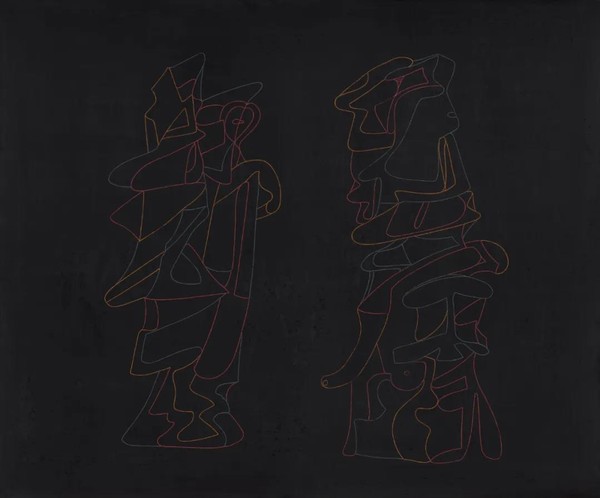
▲
调笑令/Tiaoxiaoling
大漆、麻、木板/Lacquer hemp board
2020 / 50x60cm
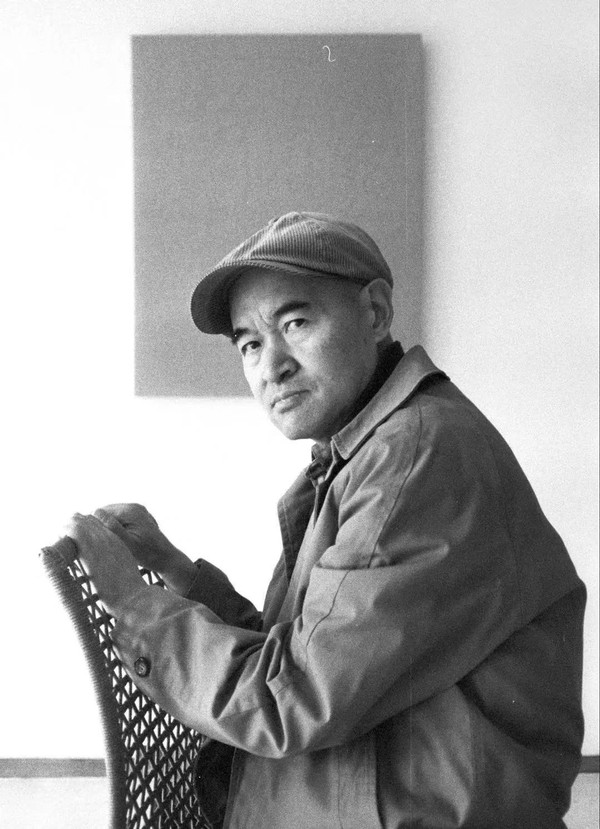
吴杉,1960年生于中国杭州,现生活工作于杭州。1982年毕业于浙江美术学院油画系,1983-1986年就读于美国芝加哥艺术学院研究院,获硕士学位。1988年在芝加哥中国艺术中心担任策展人。2006年回国,现为中国美术学院中德艺术研究生院教授。曾在中国美术馆、浙江美术馆、南京艺术学院美术馆、芝加哥海德公园艺术中心、芝加哥艺术学院、印地安那州南本德美术馆等国内外机构举办展览。近期个展包括:《如梦令》 杭州瀚阳艺术中心(2016)、《曲径》站台中国当代艺术机构(2018)。
Wu shan, born in Hangzhou, China in 1960, Wu Shan now lives and works in Hangzhou. He was graduated from the Oil Painting Department of the Zhejiang Academy of Fine Arts in 1982, studied at the Graduate School of the School of the Art Institute of Chicago from 1983 to 1986 and acquired the master’s degree. He served as the curator at the Chinese Art Center in Chicago in 1988. He returned back to China in 2006, and he is now the professor of the Chinesisch-Deutsche Kunstakademie, China Academy of Art. He once held exhibitions at domestic and overseas institutions such as the National Art Museum of China, Zhejiang Art Museum, Art Museum of Nanjing University of the Arts, Hyde Park Art Center in Chicago, School of the Art Institute of Chicago and South Bend Museum of Art in Indiana. Recent Solo exhibition includes “Exhibition of Wu Shan’s works" Hangzhou Hanyang Art Center (2016); “Wu Shan : Winding Path”, Platform China Contemporary Art Institute (2018).
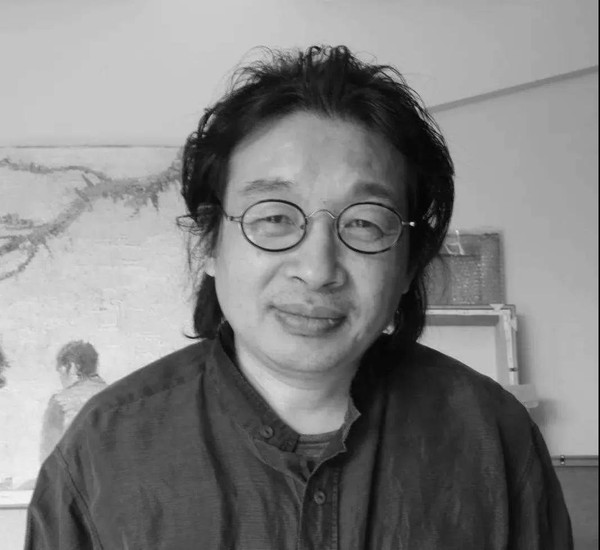
汪民安,清华大学人文学院教授,主要研究领域为当代批判理论、文化研究与当代艺术。著作《福柯的界限》、《形象工厂》等多部著作,主编《人文科学译丛》《文化理论译丛》和《生产》等。
Wang Min'an, a professor at the School of Humanities, Tsinghua University. His research interests include contemporary critical theory, cultural studies and contemporary art. His works include Foucault's Boundaries and The Image Factory. He is also the chief editor of the Translation of Human Sciences, Translation of Cultural Theories and Production.

分享到微信,
请点击右上角。
再选择[发送朋友]
或[分享到朋友圈]

